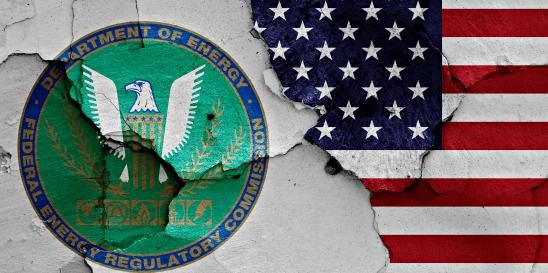On 21 March 2024, the Federal Energy Regulatory Commission (FERC) issued Order No. 2023-A, rehearing and clarifying its landmark generator interconnection reform final rule. Order No. 2023-A largely upheld the interconnections reforms adopted by FERC in Order No. 2023, subject to certain modifications and clarifications. These orders will have a significant impact on the development and deployment of new generating and storage projects.
In Order No. 2023, FERC revised its pro forma Large Generator Interconnection Procedures to move from a first-come, first-served serial interconnection study process to a first-ready, first-served cluster study process and adopted measures to speed up interconnection queue processing. In the order, FERC imposed more stringent obligations for interconnection customers to enter the interconnection queue (by adding stricter generator site control requirements and increased study deposits and commercial readiness deposits) and imposed withdrawal penalties when interconnection customers depart the queue. FERC also instituted stricter requirements for transmission providers to timely complete interconnection studies by replacing the reasonable efforts standard with firm deadlines and introducing penalties for late-completed studies. In addition, FERC adopted a more standardized and detailed process for when affected systems are identified as part of the interconnection study process. FERC also made reforms to the interconnection process designed to incorporate technological advancements. Our white paper, Order No. 2023: Interconnection Reform is Finally Here, explains the interconnection rule reforms.
In evaluating the rehearing and clarification requests, FERC acknowledged the dramatic increase in interconnection requests and that interconnection backlogs remain a massive issue throughout the country that needs to be addressed. As such, FERC sustained its findings from Order No. 2023 that the existing pro forma generator interconnection procedures and agreements are insufficient to ensure that interconnection customers are able to interconnect to the transmission system in a reliable, efficient, transparent, and timely manner and are unjust, unduly discriminatory or preferential; therefore, the revisions from Order No. 2023 to the pro forma open access transmission tariff and FERC’s regulations are necessary to ensure rates that are just, reasonable, and not unduly discriminatory.
On rehearing, FERC only modified around the edges of the reforms adopted in Order No. 2023. For example, FERC clarified that interconnection customers currently in a transmission provider’s interconnection cluster study process will become subject to the transmission provider’s new readiness requirements implemented as part of the Order No. 2023 compliance process. Unless FERC approves a variance, an interconnection customer that has not executed a large generator interconnection agreement (LGIA) (or requested that an LGIA be filed unexecuted with FERC) must comply with those new readiness requirements within 60 days of the effective date of the transmission provider’s Order No. 2023 compliance filing. If an interconnection customer is unable or unwilling to meet the transmission provider’s new readiness requirement, the interconnection customer may withdraw its interconnection request within that 60-day period without penalty.
Furthermore, FERC determined in Order No. 2023-A that a shared network upgrade can only be considered a stand-alone network upgrade (and thus eligible to be constructed by the interconnection customer(s)) if all affected interconnection customers agree to exercise the option to build such shared upgrade. Similarly, shared interconnection facilities are only eligible for the option to build if all affected interconnection customers agree to exercise such option to build. Such affected interconnection customers will have to voluntarily develop a written agreement (outside of the transmission provider’s interconnection process) regarding responsibilities and payment for the construction of the applicable shared interconnection facilities and/or stand-alone network upgrades and provide the executed agreement to the transmission provider.
In addition, on rehearing, FERC expanded the acceptable forms of financial security for interconnection customers (in addition to cash and an irrevocable letter of credit) to include surety bonds or other forms of financial security that are reasonably acceptable to the transmission provider. FERC also specified that all interconnection requests must be validated by the transmission provider by the close of the cluster request window. Only interconnection customers with valid interconnection requests at the close of the cluster request window will proceed to the next step in the interconnection study process.
Among provisions upheld on rehearing is a requirement for transmission providers to evaluate an enumerated list of “alternative transmission technologies.” Applying this requirement to both the large and small generator interconnection procedures, these include a range of voltage control equipment, power flow control devices, synchronous condensers, voltage source converters utilized with high voltage direct current systems, advanced conductors, and tower lifting. In requiring these technologies to be examined during both cluster studies and restudies without the need for a specific request from an interconnection customer, FERC has mandated a much wider range of solutions that may be both more cost effective and more expedient. Failing to examine these solutions, by contrast, would render FERC-jurisdictional rates unjust and unreasonable. In upholding the rule as both not overly burdensome and not affording “unfettered discretion to disregard” other solutions, FERC highlighted that transmission providers “must explain their evaluation of enumerated alternative transmission technologies for feasibility, cost, and time savings” compared to a “traditional network upgrade,” and that this determination may be contested. In granting clarification around what is meant by “advanced conductors,” FERC explained that this means “conductors are advanced relative to conventional aluminum conductor steel reinforced conductors, and include but are not limited to, superconducting cables, advanced composite conductors, high temperature low-sag conductors, fiber optic temperature sensing conductors, and advanced overhead conductors.”
Order No. 2023 compliance filings by transmission providers were scheduled to be due on 3 April 2024. In light of the changes made on rehearing and clarification in Order No. 2023, FERC extended the compliance filing deadline to 30 days after Order No. 2023-A is published in the Federal Register (as of 26 March 2024, Order No. 2023-A has not yet been published in the Federal Register).





 i
i


